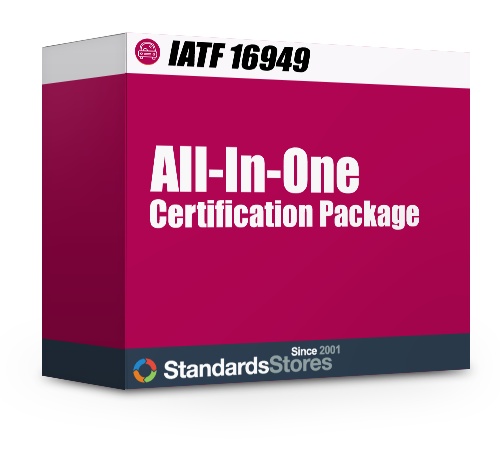IATF 16949 2016 Context of the Organization
- Determine, monitor and review external and internal issues
- Determine, monitor and review relevant interested parties
- Establish the quality management system scope
- Determine processes needed for the QMS as well as their required inputs, expected outputs, sequence and interaction, resource needs, responsibilities, risks, and opportunities
The 16949 standard following ISO 9001 expects all organizations to understand the context of their QMS. The context includes defining influences of various factors on the organization and how they impact the QMS; the culture of the company, objectives and goals, complexity of products, the flow of processes and information. The context of your QMS also requires a reflection of the size of the organization, its markets, and how they define customers and other interested parties. It also uses the context as a way to detect risks and opportunities and how it affects the QMS.
Section 4 Context of the Organization
Section 4.1: Understanding the Organization and Its Context
As stated in ISO 9001, organizations must assess both internal and external influences in formulating and implementing a QMS. Influences are defined as traditional customers, ecumenic and competitive factors, laws, technical developments and even political/cultural/social changes that may impact the mission of an organization.
Section 4.2: Understanding the Needs and Expectations of Interested Parties
Organizations must address the desires and demands of all parties that have an interest in the organization and that could impact its mission and further who would influence its QMS. Anyone seeking to have an IATF 16949 certification must comply with ISO 9001 to have an ongoing system for determining these interested parties and their requirements.
Note: In February of 2024, ISO published an amendment to Clause 4.1 and 4.2 to include climate change considerations.
- Learn more about ISO 9001:2015 Amendment 1: Climate action changes
Section 4.3: Determining the Scope of the Quality Management System
As a result of the above wide-ranging franchise, the standard also requires the scope of the QMS to potentially be broadened to encompass how the needs of relevant groups noted above can be addressed within the QMS as it delivers its products and services.
The scope of the QMS must be documented and centered around the organization’s supplied services and products.
Section 4.3.1 Determining the Scope of the Quality Management System
Supporting functions, whether on-site or remote (i.e. design centers, corporate headquarters, etc) must be included in the scope of the QMS. The only permitted exclusion for IATF 16949 QMS standard relates to the product design and development requirements within ISO 9001, Section 8.3. An exclusion must be documented and justified (see Section 7.5).
Section 4.3.2 Determining the Scope of the Quality Management System
Customer- specific requirements must be evaluated and included in the scope of the QMS.
Section 4.4: Quality Management System and Its Processes
The QMS requires that the organization must understand and control of the order of each phase of the QMS processes and how each process influences another including:
- Measures used to gage effectiveness
- How those measurements will be taken
- What criteria will be used to indicate success
- How to analyze the process so that it can be continuously optimized to better achieve its goals
A process is needed for determining what capabilities, support and investment will be necessary and by what means this will be provided including:
- Who will be appointed to carry out each phase and how these people will be empowered
- Decide what may be detrimental for the execution of the process, and what benefits may come from proper process execution
- Documenting and updating the process, if necessary, and making it available to all involved
4.4.1.1 Conformance of Products and Processes
The organization is required to ensure conformance of all products and processes, which includes service parts and those that are outsourced, to all customer, statutory and regulatory requirements.
4.4.1.2 Product Safety
All organizations are required to document all processes for the management of product-safety related products and manufacturing processes. This includes but is not limited to:
- statutory and regulatory product-safety requirements
- customer notification of requirements
- Approvals for design FMEA
- identifying any safety related characteristics of products
- reaction plans
- approval of control plans and processes FMEAs
- safety related products
Please note that certain text from the ISO 9001 standard is only used for instructional purposes. Standard Stores recognizes and respects the International Organization for Standardization (ISO) copyright and intellectual property guidelines.


